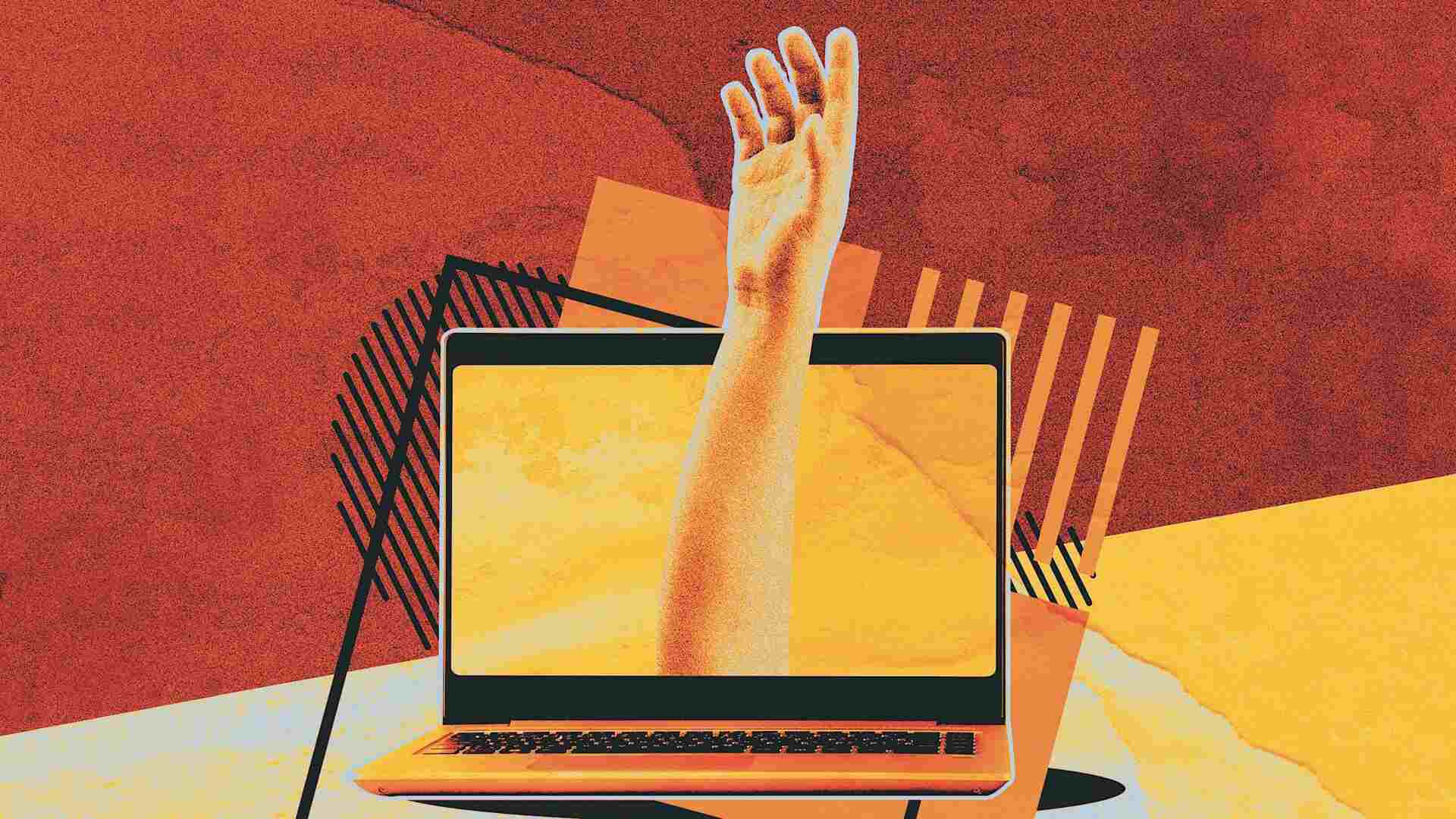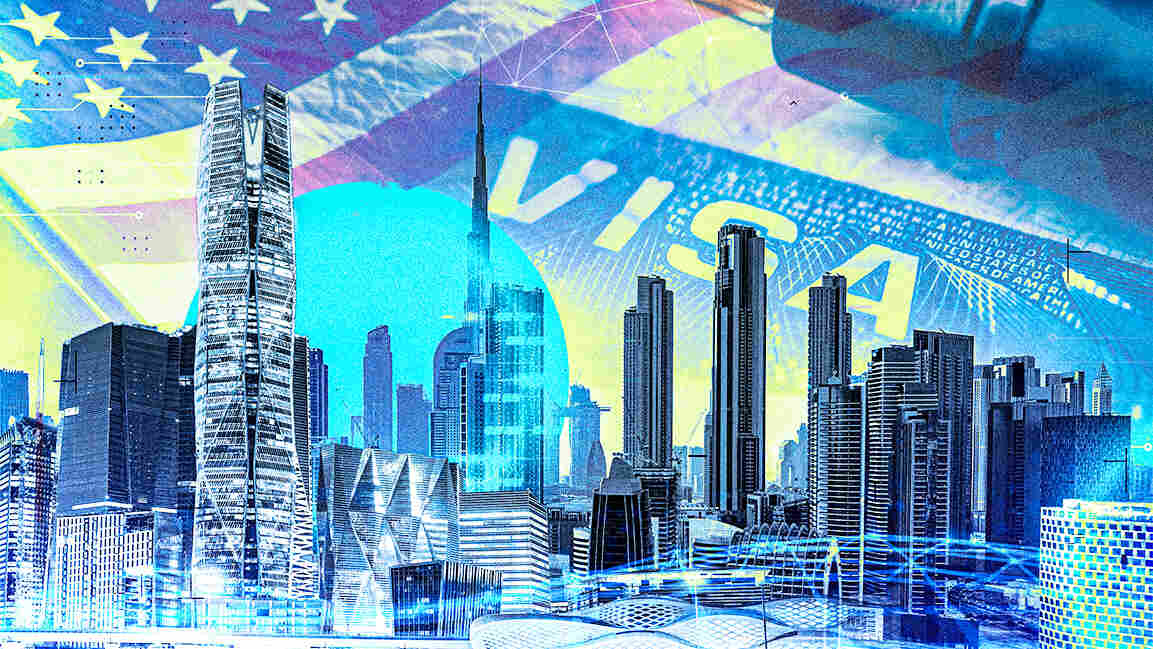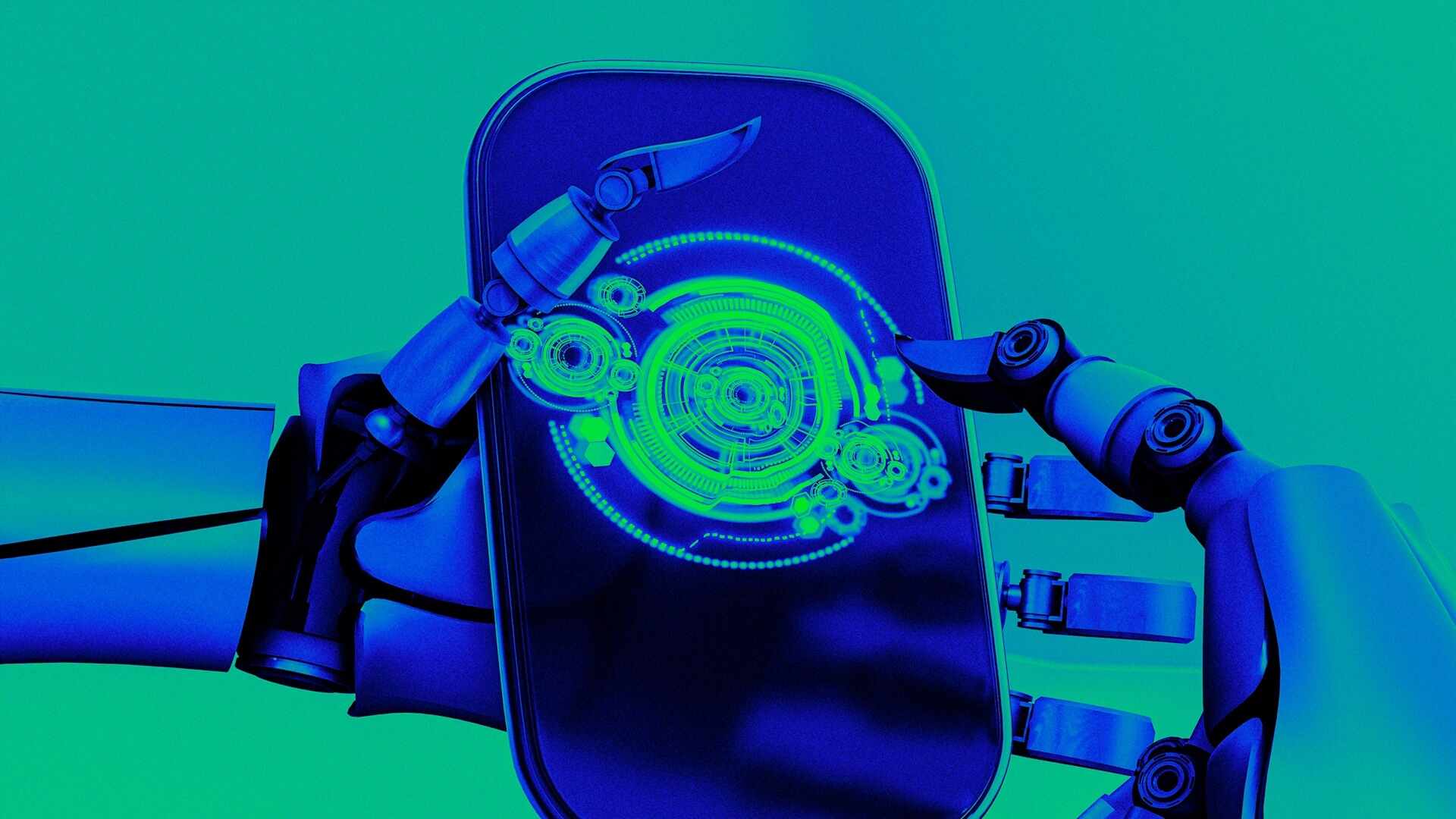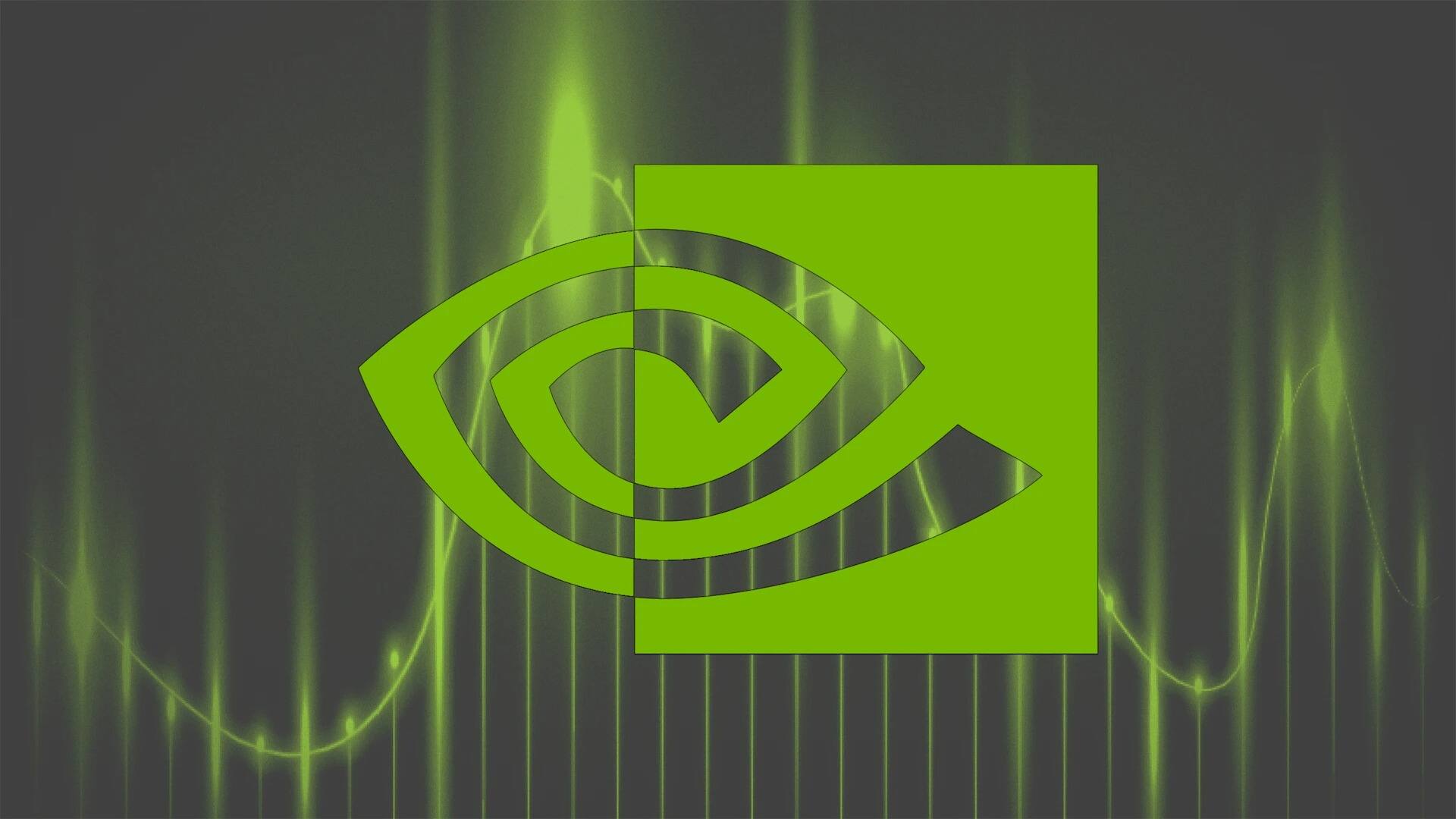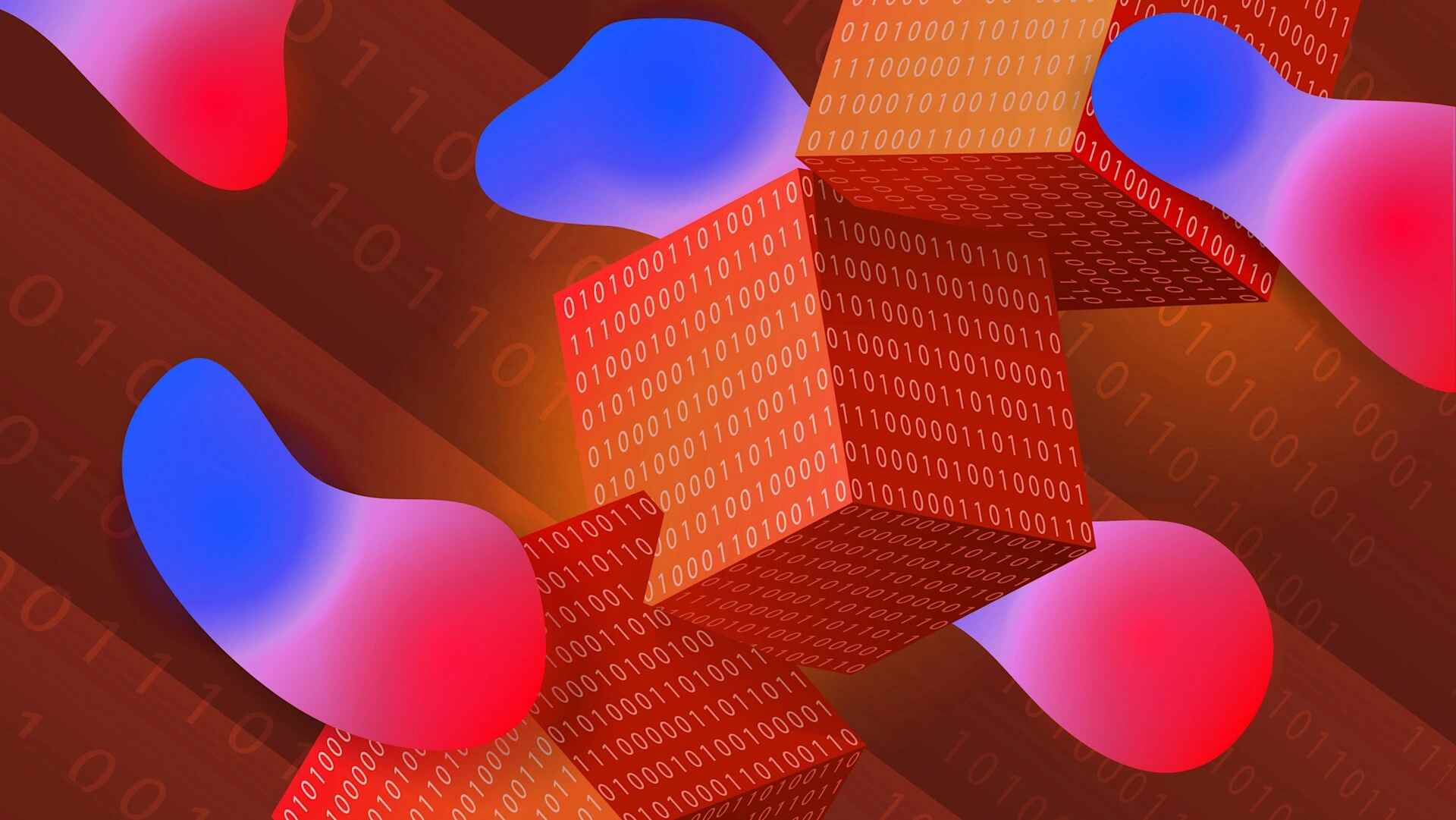- | 10:00 am
Starbucks’s $100 million man shares his vision
Starbucks CEO Brian Niccol sits down to talk about where the company went wrong, the coffee chain’s new café design, and why common sense is the best business strategy.
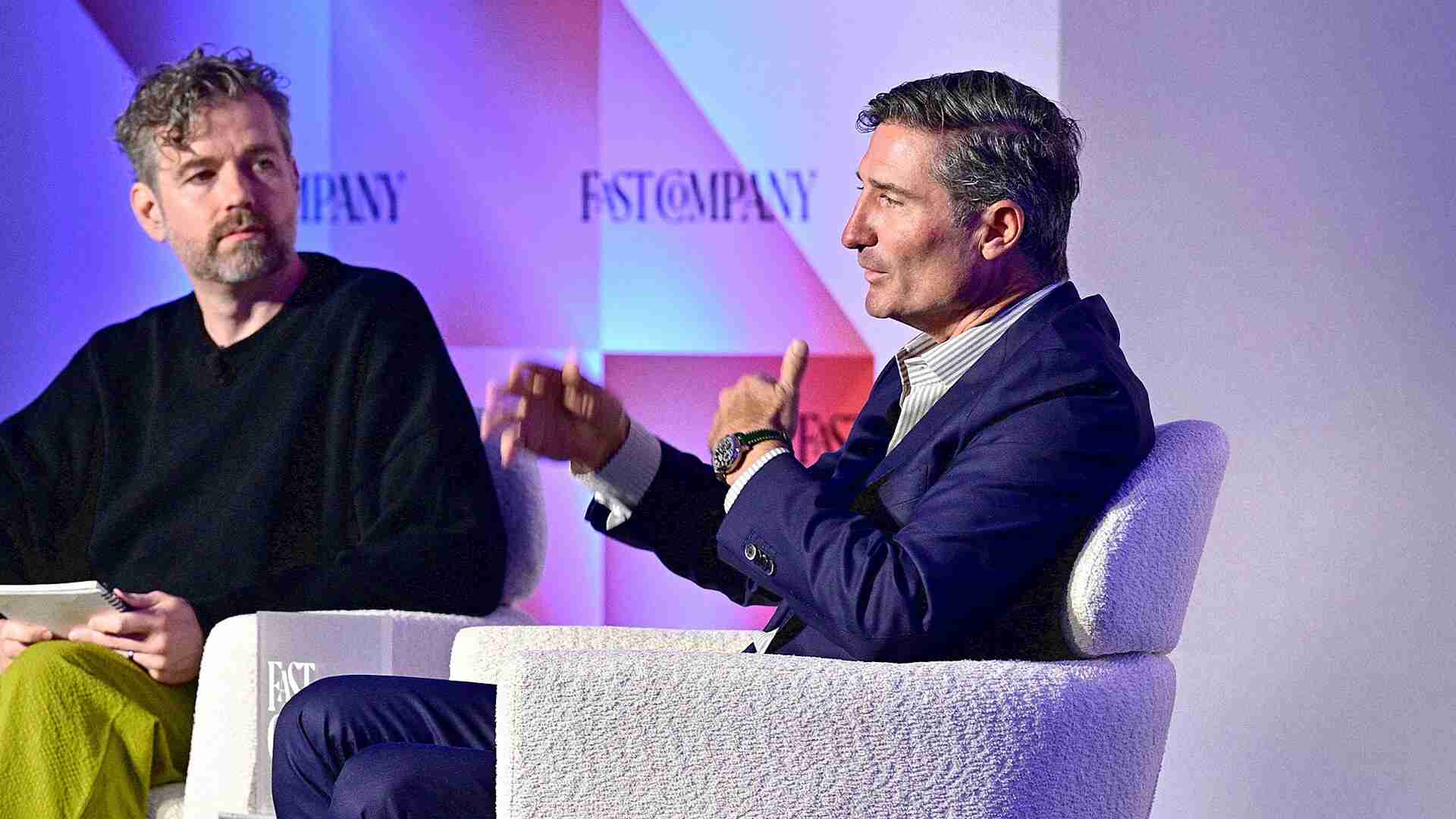
Whatever happens next at Starbucks will be studied for decades to come.
The world’s largest coffee chain has faced six quarters of declining same-store sales. But for the last year, its new chairman and CEO, Brian Niccol—the surest bet in the restaurant industry—has been architecting a turnaround.
Hot off turnarounds at Yum Brands with Pizza Hut and Taco Bell, which he followed up by modernizing burrito building at Chipotle, Niccol has proven himself to be both a master marketer and operations expert. Which is why, when he announced that his strategy for Starbucks was to revive the third place, even some of Niccol’s fans were skeptical he could pull it off.
Earlier this month, we published our Fall cover story in which I profiled the plan through an unprecedented amount of access with Niccol. And the same morning that story went live, I sat down with him at our Fast Company Innovation Festival in New York.
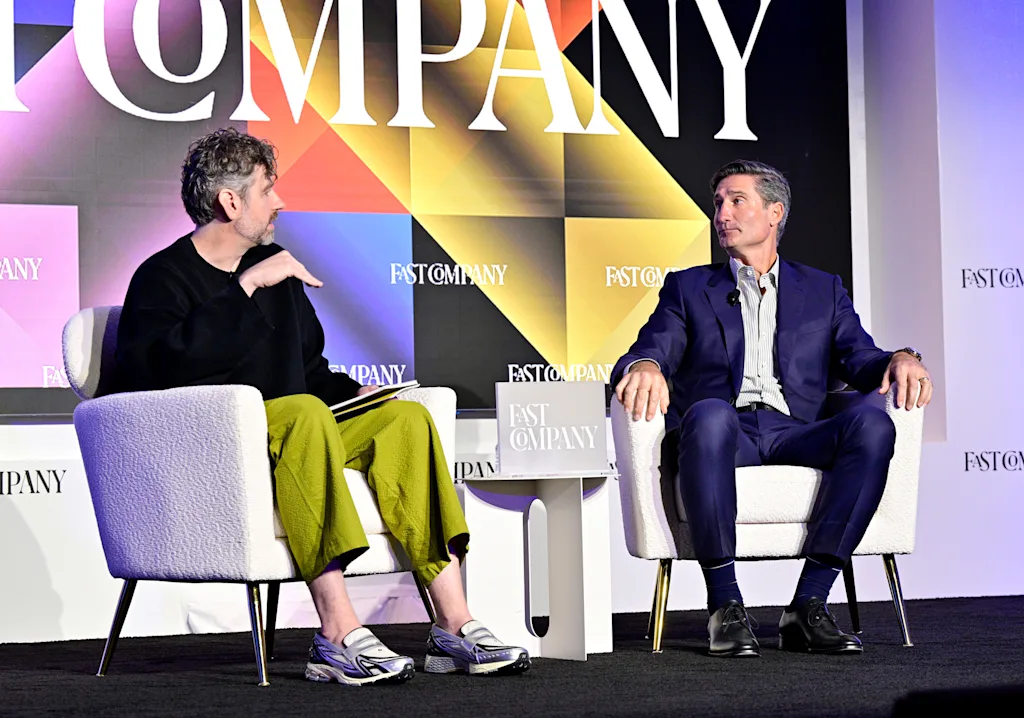
In front of a standing-room-only audience, Niccol gave his first public interview since taking the job. And what the audience experienced was remarkably like what I did over hours of previous conversations with Niccol: He is disarmingly practical, charmingly matter-of-fact, and flatly uncompromising. Unlike many CEOs who will say just enough to escape off the stage, he proved open to take on any question about his business with gusto.
You can hear the full interview on this month’s episode of our podcast By Design, watch it on our site, and also read the full transcript below. From his plans to design a new Starbucks chair to his comments on his biggest competitor, you don’t want to miss this one—best enjoyed alongside a hot cup of joe.
Fast Company: No matter what your feelings are about Starbucks, in your heart of hearts, there was a time that Starbucks was the best. And I don’t know that we’re going to agree on what that year was, but whatever it was, Brian wants to bring you back to it.
Since taking over as CEO last year, he’s kicked off a design-led turnaround for Starbucks, re-skinning stores, bringing back seats, rethinking sort of back-of-house service.
But I do have one little confession. When Brian and I first met for this story, I said that at the announcement of his hiring, I wasn’t sure he was the guy for the job.
Sure his bonafides were really as the top guy in the restaurant industry. He came from Taco Bell, where he launched an app and turned that company around. He went to Chipotle—a very different, very analog company—where he installed screens and a second line for making burritos that brought new efficiency. He upgraded their app significantly, and turned Chipotle around.
But Starbucks has the best app already! So what could he do there?
And I think what we really got into quickly was that for Starbucks to have a design turnaround, it actually needed to rethink its entire infrastructure.
Brian Niccol: Look, the Starbucks strategy of “Back to Starbucks” is all about ultimately getting to the place of being the best of Starbucks again. And if you think about what makes Starbucks special, it’s how you feel when you’re in a Starbucks, when it’s truly a community coffee house. It truly is the third place.
I think it is our point of difference and it’s why people fell in love with Starbucks. It’s why I fell in love with Starbucks 20 years ago when we had the first Starbucks come to the little town I was in just outside of Cincinnati. And I think there’s no reason why we can’t have that today. And I actually think people want it more than ever. I know digital and AI and the ability to connect and get bits of information in all forms or fashion are faster and easier than ever before.
But I think nothing beats the good old-fashioned sit-down with a friend, sit-down with a family member, sit-down for a job interview face-to-face over a cup of coffee. It never can be replaced. And so I think when we do it right, there’s nobody better. And I firmly believe the best days of Starbucks are still in front of us.
I’ve had the opportunity to travel around the world and experience our coffee and the community coffee house around the world, and it transcends cultures; it transcends borders. It really is, I think, the best of humanity when you get people together around a table, in a safe place, over a cup of coffee. I really do believe it’s important to get these ceramic mugs back too because there is something to this like mug hug when you get your warm cup of coffee. And we want all those little moments to be back again. We’re designing a new mug, we’re designing a new seat, we’re doing these coffee house uplifts. I do believe the customer experience—the aesthetic of that community coffee house—is really important.
It seems like at an age when everything is basically digital and convenience dominates, it’s no longer a distinguishing feature for your brand.
Look, we’ve got to have access through the app, we’ve got to be quick, we’ve got to be convenient, we need to have drive-throughs. I think the thing that separates us is that coffee house moment. Whether you’re walking into a coffee house to just grab your cup and go, I think it’s important that you walk into a coffee house. We’ve all been in those places where we’ve gotten to-go food. And if you walk into a place and it’s empty and soulless, you don’t feel great about that to-go order. If the place has a soul, a connection, even if it’s a to-go order, you feel much better about that to-go order. And I think the same is true for Starbucks.
That’s part of the business argument, right? That basically upgrading the physical space will actually increase digital orders and other things along those lines.
Absolutely. And look, the other thing too is there was a lot of feedback from our partners on what it took to run the Starbucks. Now you have three key access points: You’ve got the drive-through, mobile-order pickup, and now you have the café or the counter experience for the café. And we’ve worked on technology and process and flow and staffing to ensure that our teams are set up where they can do all three of those access points successfully.
Some of the feedback I was getting initially is they’re not set up for success. And so you might’ve heard us talk about this Green Apron service model that we just started to roll out, and we’re investing $500 million to $600 million into additional labor in the stores. But it’s purposeful. It’s purposeful to make sure that every transaction is more than a transaction—it’s actually a moment of connection both at the time you order and at the time you hand it off.
So I want to rewind a bit: You start last year, you come into the role. Tell me what drove you crazy.
Well, there were a few things that drove me crazy. I had left Chipotle and I had about a month, month and a half before I was starting at Starbucks. And the thing I did was I started going to Starbucks with a lot more frequency. I was kind of between jobs and I heard that’s kind of one of the things you do is you go hang out at Starbucks.
But when I went, what I quickly realized is we had done some things that basically did not deliver on having a great in-café experience. I walked into a store, and outlets were covered or outlets weren’t working. There weren’t enough seats. It was clear that we had prioritized a waiting area for mobile orders over solving, How do we better sync up the timing of when you order your drink and when you show up for your drink so that you don’t need as big of a waiting area and we can put those seats back in?
I also saw it was very transactional, as opposed to giving our baristas, or our partners, the time to create connection and also do their craft correctly, consistently. When I started to see these things . . . it was really interesting.
There was one customer, he happened to be in front of me and he didn’t realize I was the CEO. And he ordered a brewed cup of coffee from our Clover Vertica machine, and our barista turns around, makes the brewed cup of coffee and then sends it down the line behind lattes and everything else.
The gentleman’s literally getting anxious. You can tell he just wants his cup of coffee right now, and instead we were sending it down the line. And so I just asked him: I was like, “Hey, does this happen to you all the time?” He’s like, “All the time. . . . I can put my own milk in my coffee.” And what I found out was we had removed the condiment bar during COVID and we never put it back. And we had also changed the process of brewed coffee to go down the line as opposed to just handing it back to you at POS.
It went down the line because the barista was the one to pour in the oat milk or whatever.
That’s right. And inevitably, your coffee’s very personal. So to tell somebody how much milk to put in or how much sugar to put in, it’s very hard to get it correct when the person doesn’t see what’s going on. So we also had a scenario where we’re redoing these coffees a lot, or worse yet, I saw somebody hand somebody their cup of coffee, a cup with some milk, and then a cup full of sugars. And then this person’s gotten now three cups and is looking like, Well, where am I supposed to go with this? We don’t have the seat for him to sit down to go put the cream and sugar into his coffee.
So those were little things where I’m like, Gosh, this is really frustrating and there’s no reason for it to happen. It made it hard on our partner, it made it hard on our customer. And these were simple things to solve. And hopefully you’ve seen that already go into effect where now we have the condiment bars back. When you do order brewed coffee, they should hand it to you right at the order point.
Let me pause you there, though. Because on paper it’s simple enough to put the milk back on the condiment bar. But on the back end, you stopped charging more for different or alt dairy milks, right? That’s a relatively big decision, but you made it pretty quickly.
Yeah, well that was another thing that I was hearing from customers. And I guess probably the point, to go back to your question, when I first started—I always take the approach of what are customers saying? What are our partners saying? What’s working? What’s getting in the way? And then it’s a really easy list to create to say, “Okay, if we just fix these things to eliminate these pain points for both our customers and our partners, I think we’re going to make a lot of progress.”
One of the pain points was why is regular milk no upcharge, but there’s an upcharge when I want oat milk? I was listening to it, and I’m like, I think they’re right. As a customer, that would not delight me. So we made the decision to stop charging for alt milk. Doing that also freed us up to then have the right milks on the condiment bar. What I found out was one of the weird little barriers was, well, we wanted to charge for the alt milk, so we didn’t want to put it on the condiment bar.
I saw the hacks where people get the espresso, pick up the oat milk, and dump half the container. Kind of screws everybody, but also saves a dollar.
What’s so interesting is you see these compensating behaviors, and you’re like, this is really silly. We can make it very simple. And the simplicity actually works for everybody.
You’re changing store design quite a bit. There will be three core store designs—I would say small, medium, and large. And the small in particular is going to be a new format store we haven’t really seen before, modeled after a classic espresso bar.
So the idea is in a small format you can still have a great barista connection and still have a couple of seats. You’ve all experienced these places as you’ve traveled around the world. The traditional espresso bar is actually, though, just a walk up to the bar, get a shot of espresso, maybe have a few words, and out you go. I do believe we still need to have some atmosphere where if you want to sit down and have your drink, you can still have a seat. So there’ll be small formats primarily driven toward the idea of like, hey, I want to get my coffee. Maybe just have a minute or two at the barista [counter] and then move on. But [we will] also provide six to eight seats where if you want to sit down, you can sit down.
Then obviously when you go to the medium store, you’re going to have probably 30 seats. And then as it gets bigger, you can get to 50, 60 seats. In some cases, even bigger. You might’ve seen we just opened a flagship store in Spain at the Bernabéu [Stadium] in Madrid, and that is the third place on steroids.
You have a complete view of the pitch or the Real Madrid soccer team. It’s amazing.
It really is amazing. I think actually, I think Fast Company called it the most beautiful Starbucks in the world right now. So my point is they can be beautiful when they’re big and multistoried, or they can be beautiful and intimate when it’s 800 square feet with 10 seats. We do not have to make a trade-off.
You’re adding 30,000 seats back?
I think it’s going to be closer to hundreds of thousands of seats back.
We’ve basically seen every major restaurant chain rip out seats over the last five years. I wrote an essay a few years ago called “Death of a place to sit,” and we’ve seen this trend everywhere. Do you think this is going to lead the industry in a resurgence of seating? Do you think people sort of draft off of Starbucks like they did Starbucks’s rewards app years ago?
I think people want a place to be able to spend time with each other over food or over coffee. When I was at Chipotle, there was a moment there where we were like, “Oh, you don’t need that front of house anymore. You can just do everything through the digital-make line.” At the time I felt like I was a little bit out on the island, but I was like, “I disagree.” I think people like to come into the store, interact with [other people]—in that case going down the line to get your customized experience.
And the same thing’s true at Starbucks. I hear over and over and over again, the connection between the barista and our customers is unlike anything I’ve heard. There are these examples where people walk in, and the barista knows them so well that they’ve already made their drink before they’ve gotten to the POS. I wish every single one of our transactions was that intimate, that personal. That’s what we need to get to.
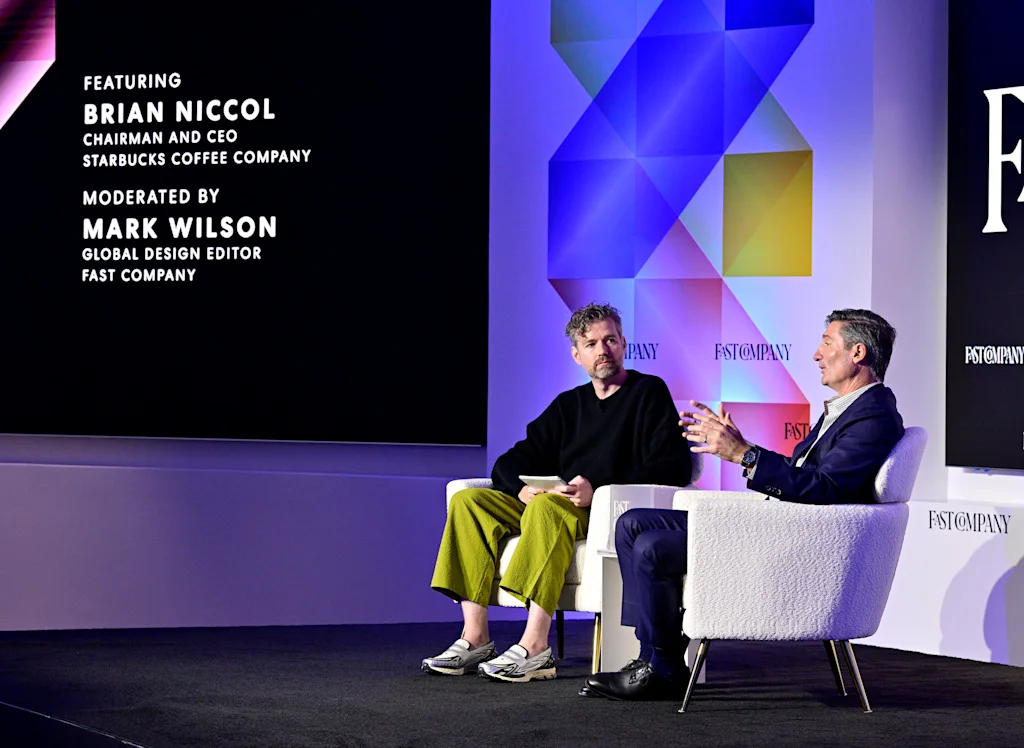
This is taking a lot of investment. You’re going to staff up; these store uplifts cost about $150,000 apiece, and remodels cost a little bit more. All of these improvements I do believe could move the needle significantly for Starbucks. But are you worried with a pinched middle class where we’re seeing credit card debt rising and the economy’s obviously shaky? If you have all of these challenges around a $6 or $7 coffee, does that offset your gains?
I don’t think so. When you have a commitment to craft and quality like we do, and then you have a commitment to what I would call a great customer experience. I would love for Starbucks to become the world’s greatest customer service company. Right now, when I ask people “Name me a great customer service company,” I usually get a blank stare. Which I find fascinating because I’m like, well geez, that tells me right off the bat there is a huge opportunity to be the defining customer service company.
I think there is tremendous value in being a world-class customer service company combined with great craft, great quality food and drink. And I think when you look at putting those two things together for the price that we will have to charge for it, I think it’ll turn out to be invaluable. It comes back to experience.
I’m still seeing reports that to provide that customer experience baristas are taxed a little extra. And I know you’re staffing up. I know that you are simplifying the menu, and you’re doing all sorts of things to help them out, to buy them time. But they’re writing with Sharpies on cups again, they’re still slammed. When do you feel like you’ll see a broad relief for that group?
Our goal is to create a situation where our partners can thrive. I do think we have to accept what the standards need to be, though. And so our standard is going to be great customer service and great craft, and I don’t believe we can lower the standard. I think what we need to do is make sure we create process, programs, investment so that the standard is achievable. And the other thing too—and I’ve said this to our organization—I was like, here’s the fact: The standard’s going to go up every year.
If you think the Sharpies are hard today . . .
Well no, what happens is over time the Sharpie becomes just, “This is what I do.”
That’s the baseline.
That’s the baseline. And it is partly a new thing right now. Therefore, as with anything, any little bit of change, sometimes there is a change curve. I think the mistake sometimes is we read into the change curve as like, “Ooh, we need to lower the standard.”
I actually think, no, we need to provide the support to get through the change curve and then give people the ability to hit the standard. What I’ll tell you is when people hit the standard and they get that great customer experience, they are unbelievably proud of what they just provided. We as the corporation need to make sure we’re setting our teams up for success so they have every right to hit the standard.
You mentioned a new chair and new cups. These are sort of pet projects that you’ve had. I don’t know if anybody remembers, but Starbucks used to have this purple chair that was very Tim Burton-esque. And when you came on, you were like, “We’re bringing back the chair.”
When you walk into these places that are personal to you, there’s always a seat that you’re like, That’s my seat. And even if somebody’s sitting in it for the moment, you keep an eye on it. And the reality is that purple chair was one of those seats in our stores where it was like, You know what? Once that seat’s available, I’m going to grab it.
You would also see young kids—it was amazing to me—but six kids would be using that one chair. And so we’re going to come out with, I think our contemporary version of that signature chair. It probably won’t be in every single Starbucks, but it will be in a lot of them. And then I also think there’s an opportunity to differentiate ourselves with a special mug. So when you choose to stay in our café, you get a ceramic coffee mug that aesthetically says, “Hold me, stay with me.” And ideally people will be wanting them personally. Maybe they’ll even want to buy ’em for their own use at home.
I was going to ask: Is that something I could buy, or is it something I’d only drink out of at a Starbucks? Can I buy the chair?
So there’s a debate. Look, my preference is, why not? Why not let people, if you love the chair and you want to buy it, we should probably do something with Pottery Barn or Williams Sonoma or whoever, Restoration . . . where they can turn around and resell this chair for us. We’re not going to be in the chair-selling business.
There’s a debate though. Some folks are like, “Oh, we should only have the mugs in the store.” And I’m like, “Well look, if you enjoy it in the store, why not let people purchase ’em to enjoy at home?” I think the more you’re exposed to our brand, the better.
I feel like a lot of your decision-making, at least in our conversations, tends to come through as, not to oversimplify it, but common sense.
I think sometimes we overdo it and we walk past common sense. And I say this to our team all the time. I’m like, “Why are we doing this? Because common sense.” I don’t need a study. I don’t need more analytics. This is obvious. So therefore we’re going to do it, and we’re going to do it with urgency. I think sometimes we like to make simple things sound super complicated, and I’m like, “You know what? I don’t have time for the complication.” We need to be moving at the speed that our customers are moving. And when you see common-sense solutions, you just got to act on it.
We have only a few minutes left and now we are at the point of Mark has questions about Starbucks as a Starbucks customer.
So, what’s up with matcha? Matcha is going way up, but my understanding is there’s not a lot of matcha in the world.
It’s funny you bring this up—we were just talking about this. We’re going to figure out how not to run out of it, that’s for sure. But yeah, matcha is having a moment. And look, the reason is, it’s really good, right? One of my afternoon drinks is a cold matcha latte. And I think also it tastes really good when you put one of our cold foams on it.
The Chinese chain Luckin is really growing quickly. They have a very opposite model, like very Uber-based transactional. Is there anything you admire from what they’re doing?
I think there’s always something you can learn, and they’ve done a nice job with I would say, some of their flavor work. I think they’ve done an interesting job on how they’ve turned the app into the only way you can interact with that business. It’s a different approach. I don’t think it’s the right approach for us. It’s definitely having an impact in China.
But I will tell you our Starbucks business I think is having a nice recovery in China as well by us getting back to making sure that we’ve got the right product innovation and also the right customer experience. The one thing that they’ve probably done a nice job of is just an unbelievable pace of product innovation. And so I think it kind of sets the tone for like, Hey, we cannot be complacent on flavors and drink combinations.
Alright, we’re at time. Do you have a secret to share about any future menu items?
Well, I will tell you, and this probably isn’t all that secretive, but we are coming out with protein cold foam.
Oh, come on. That’s not a secret.
The other thing I’ll tell you is we are going to be reimagining all of our baked items. I think there’s a real opportunity for us to be much more artisanal, and I think it will complement our beverages. I do believe our food needs to match the craft of our coffee, and I think there’s a real opportunity for us to elevate and be much more artisanal in what you experience out of our bake case. Then ultimately, even with our food, the reality is you can’t get past people talking about protein. I keep thinking it’s peaked, and I’ve been proven wrong. So you’re going to see us figure out how we can combine more protein with gluten-free options, and I think you’re going to see a nice improvement on the food side of things.
So even more protein.
Even more protein.











